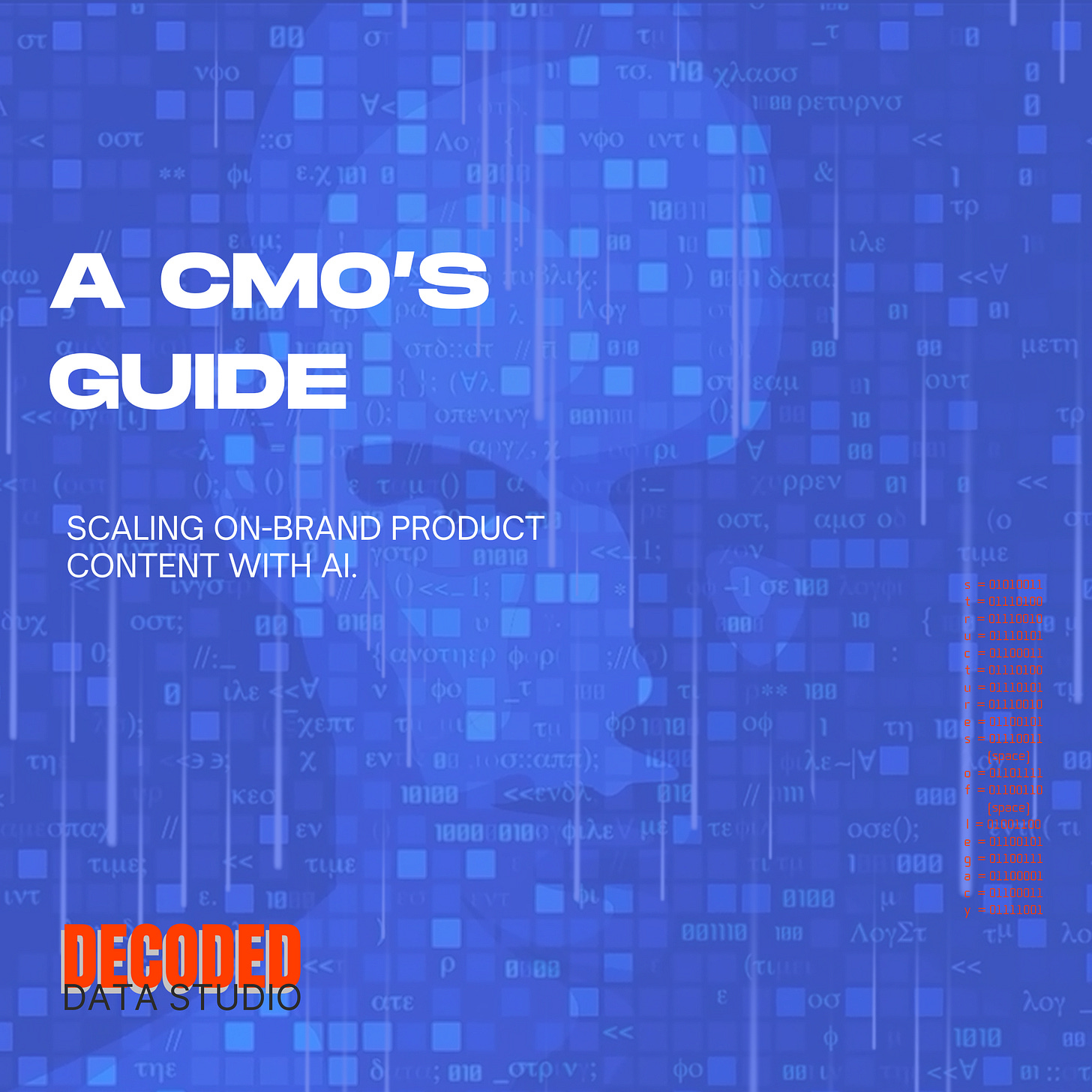CMO Guide: On-Brand Product Content with AI.
How We Used AI to Cut Content Costs and Boost PDP Performance.
Scaling Without Sounding Robotic
Using AI to create better product content—without losing brand integrity.
In the never-ending arms race for consumer attention, product detail pages (PDPs) remain a frontline asset. But as product assortments grow and attention spans shrink, the traditional approach to crafting unique, brand-aligned copy for thousands of SKUs becomes not just inefficient—but unscalable.
Many turn to AI to plug the gap—only to end up with copy that reads like it was written by… well, a machine.
This was exactly the challenge faced by one of our clients, a fast-growing retailer whose catalog had outpaced their content team’s capacity. Some PDPs were padded with templated filler. Others leaned heavily on generic supplier descriptions. New SKUs were delayed. Older ones cannibalized each other in search. And the brand voice they’d spent years cultivating? Drowned in a sea of sameness.
The consequences were stacking up:
📉 SEO underperformance from thin or duplicated content
🤖 Brand dilution through robotic, inconsistent tone
🛒 Lost conversions from vague, uninspiring PDPs
💰 Rising costs from a slow, manual content pipeline
They didn’t just need scale—they needed intelligent scale.
Building the Right Kind of AI Workflow
The challenge wasn’t just to automate—it was to generate content that felt human, stayed true to the brand, and delivered SEO results.
Our solution: We turned to large language models like Gemini 2.5 Pro, GPT-4o, Claude 3.0 Opus—but not blindly. Instead of treating them as content vending machines, we treated them as collaborators with clear guardrails.
We started by developing a robust framework around seven key principles:
Clear instructions for each content element
Few-shot examples to train tone and structure
Relevant context pulled from SKU-level product data
Chain-of-Thought reasoning for multi-step logic
Decomposed tasks (hooks, PDPs, bullets, SEO meta)
Prompt iteration and testing to avoid drift
Human in the Loop to QA output and editorial assurance
Each product was processed through a controlled prompt template that generated:
A benefit-led hook
A short, on-brand PDP description
Three punchy USPs
A concise SEO meta description
To maintain consistency and authenticity, we trained the model on the client’s own content archive—capturing their voice, values, and audience nuances. Variants like playful, minimal, or bold were applied dynamically, depending on product type or target segment.
The result?
A 70% reduction in manual content workload
Cleaner PDPs that performed better in search
A content team liberated from the tyranny of the SKU list
The lesson isn’t that AI replaces good copywriting—it’s that, with the right strategy, it becomes an extension of it.
The Bigger Picture
This isn’t a one-off story. It’s a pattern we’re seeing across the industry.
Many brands are now grappling with the same tension between speed and soul, automation and authenticity. That’s why we’ve packaged our learnings into adaptable workflow templates and prompt libraries—designed to help retailers deploy large language models intelligently, at scale, and always on-brand.
For CMOs looking to scale without sacrificing soul, the playbook is clear: treat prompt engineering like brand strategy, not automation. Because in a world where content is infinite, clarity and character are what convert.



